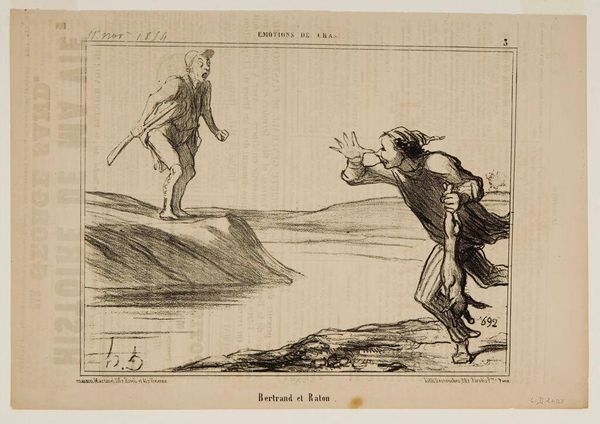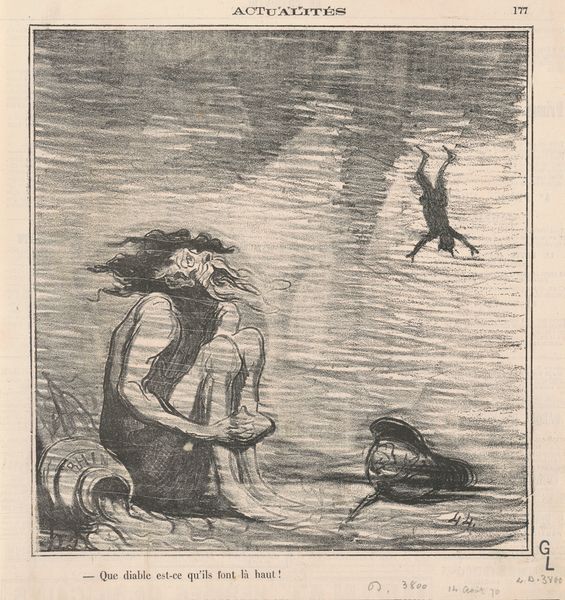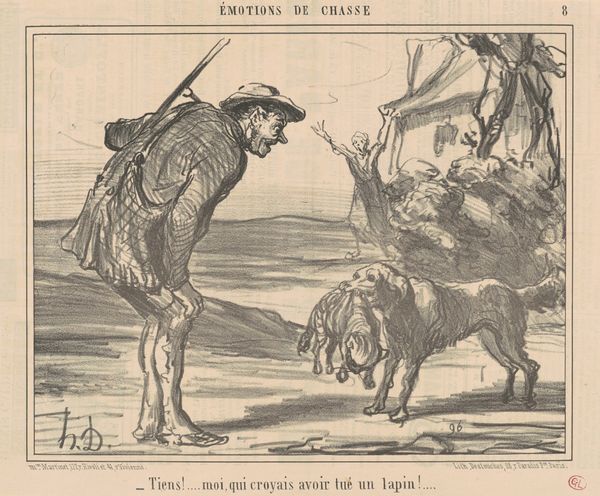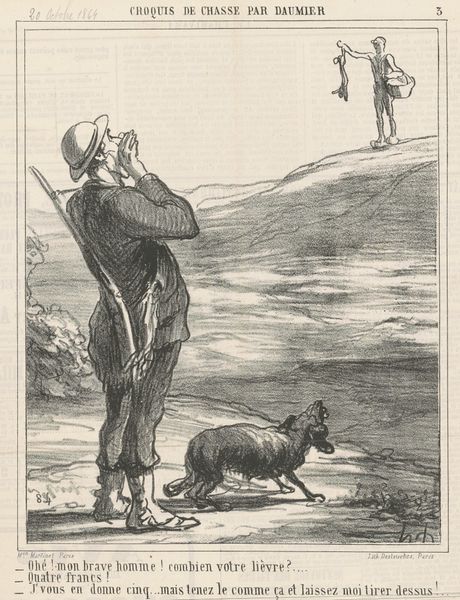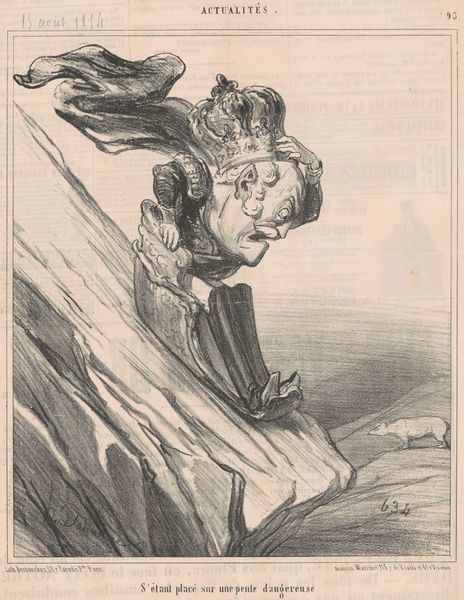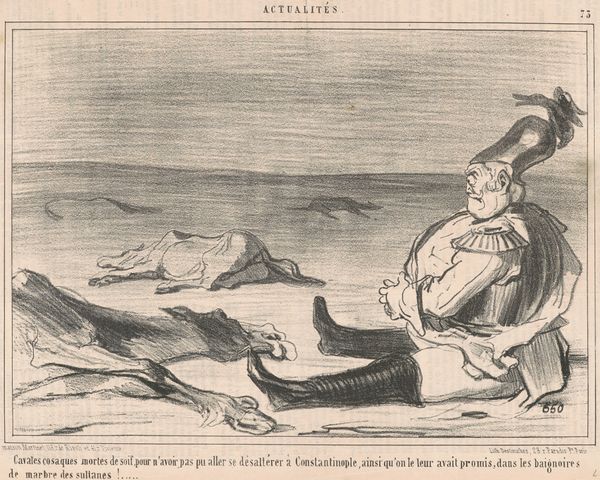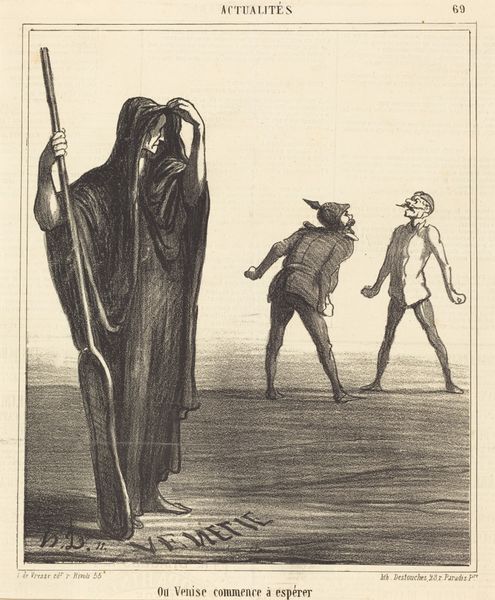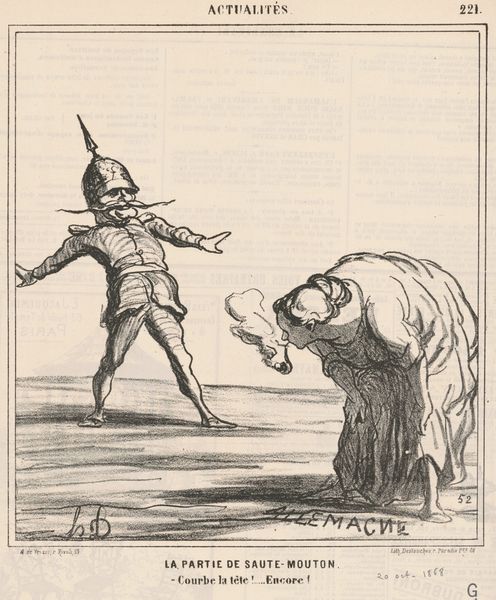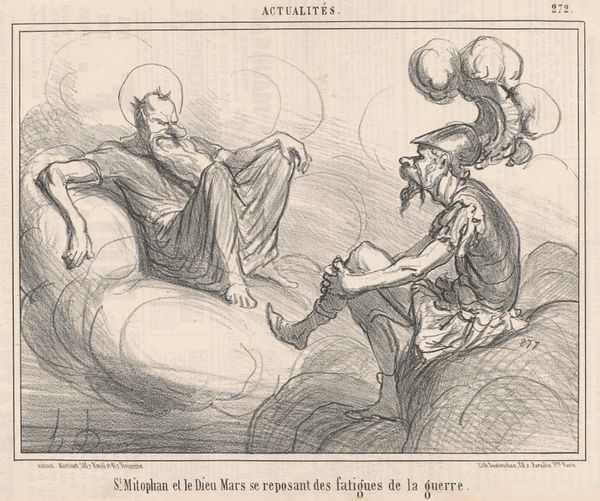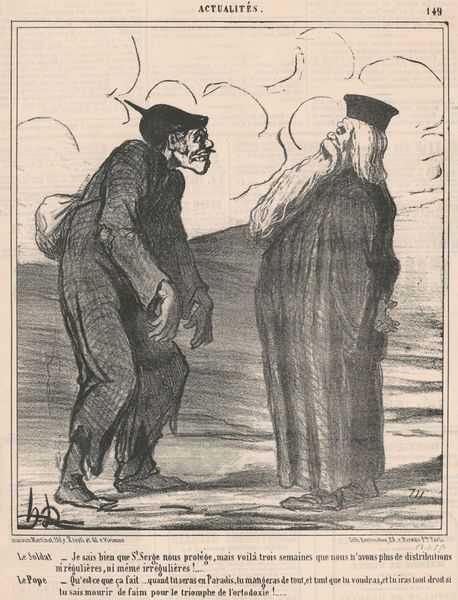
lithograph, print
#
lithograph
# print
#
caricature
#
figuration
#
romanticism
#
line
#
genre-painting
Copyright: National Gallery of Art: CC0 1.0
Curator: Here we have Honoré Daumier's "Bertrand et Raton," a lithograph from circa the 19th century. What are your initial impressions? Editor: Well, it certainly jumps out with a chaotic energy! The figures, dramatically rendered with loose, scratchy lines, look like they're in some kind of desperate chase or argument. It reminds me of a frenzied theatrical performance. Curator: Indeed! Daumier masterfully employs caricature to satirize the political climate of his time, often targeting those in positions of power. It’s worth examining how this work critiques societal structures through its exaggerated figures. Note how they're staged – it brings to mind political maneuvering and the inherent folly of ambition. Editor: Right, there's a clear class dynamic at play even just from their costumes. The man on the left is rough, almost peasant-like, versus the more deliberately absurd costume of the right figure, who holds what appears to be the object of their…emotions de chasse? Curator: Exactly! Daumier was a master of social commentary. Through his focus on the material conditions of 19th century France, you see this play between high and low culture. Think about the means of production behind lithography—a relatively accessible print medium that allowed for the wide dissemination of his critical perspectives, challenging the elites in power. Editor: So the mass production contributes to the democratizing force of this romantic vision. I’m intrigued by that juxtaposition of technique and the raw human emotions being depicted. It’s as if the industrial process itself is amplifying the drama. How was the response to this piece and others? Curator: Controversial, of course. Daumier frequently ran afoul of the censors, and even served time in prison for his satirical depictions of King Louis-Philippe. "Bertrand et Raton", with its underlying themes of manipulation and greed, was certainly interpreted as a scathing commentary on political figures of his era. These emotional caricatures exposed hidden class issues and their effects on material, political power, as much now as then. Editor: It all brings us back to considering the ways Daumier employed accessible materials, the lithographic stones, and techniques to push against constraints. This romantic piece invites discussion and analysis regarding labor, society, and consumption of the print itself. A provocative use of accessibility. Curator: Yes, considering "Bertrand et Raton," we see how it invites conversation around politics, societal structures and challenges us to really consider those in power. Editor: Absolutely, a good reminder that even simple tools and production can fuel major challenges against politics.
Comments
No comments
Be the first to comment and join the conversation on the ultimate creative platform.
